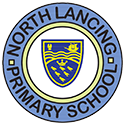
Intent
At North Lancing Primary School, we have designed our geography curriculum to develop a sense of curiosity and fascination about the world, which will remain with the children for the rest of their lives. The children are able to develop their knowledge and understanding of physical and human features of geography through investigation of a range of places in Britain and overseas. As well as learning about the wider world, children are given ample opportunities to investigate and make enquires about their local area, so that children develop an understanding of what makes our local area special. Geographers at North Lancing Primary School are able to apply geographical skills to be able to communicate their findings and understanding.
Implementation
As a school, we aim to create an inquisitive learning environment within classrooms and reinforce an expectation that all children are capable of achieving. The study of geography at North Lancing Primary School allows our pupils to question and discover more about their local area, as well as the world around them. Our progression of knowledge and skills in geography starts in the Early Years and ends in Upper Key Stage 2. It progresses through the following areas:
- Geographical enquiry
- Direction and location
- Drawing and using maps
- Representation
- Scale and distance
- Perspective
- Map knowledge and style of maps
We enrich our children’s lessons using visits, visitors, maps, atlases, books and the internet. Children are enthused by visits to local places of geographical significance, such as walking around Lancing ring and study off shore drift at Lancing beach.
We aim to encourage the children to become successful geographers by developing:
- An excellent knowledge of where places are and what they are like, both in Britain and the wider world;
- Geographical vocabulary which is appropriate and accurate and which develops from EYFS to KS1 and through to KS2;
- Fluency in geographical enquiry and the ability to apply questioning skills;
- Excellent fieldwork skills as well as other geographical techniques;
- The ability to analyse evidence and draw conclusions and explain reasons behind them;
- A genuine interest in the subject and a real sense of curiosity about the world and the people who live here;
- An appreciation of similarities and differences in the world around them.
Impact
Learning is demonstrated across each key area of Geography by sharing, showcasing, publishing and celebrating children’s efforts, achievements and final products with their peers, teachers and the wider school. Children’s learning is shown through the planned outcomes for all children and the coverage in the process of achieving these outcomes.
By the end of their time at North Lancing Primary School, pupils will:
Locational Knowledge
- locate the world’s countries, using maps to focus on Europe (including the location of Russia) and North and South America, concentrating on their environmental regions, key physical and human characteristics, countries, and major cities
- name and locate counties and cities of the United Kingdom, geographical regions and their identifying human and physical characteristics, key topographical features (including hills, mountains, coasts and rivers), and land-use patterns; and understand how some of these aspects have changed over time
- identify the position and significance of latitude, longitude, Equator, Northern Hemisphere, Southern Hemisphere, the Tropics of Cancer and Capricorn, Arctic and Antarctic Circle, the Prime/Greenwich Meridian and time zones (including day and night)
Place knowledge
- understand geographical similarities and differences through the study of human and physical geography of a region of the United Kingdom, a region in a European country, and a region within North or South America Human and physical geography
- describe and understand key aspects of: physical geography, including: climate zones, biomes and vegetation belts, rivers, mountains, volcanoes and earthquakes, and the water cycle
Human Geography
- know types of settlement and land use, economic activity including trade links, and the distribution of natural resources including energy, food, minerals and water
Geographical skills and fieldwork
- use maps, atlases, globes and digital/computer mapping to locate countries and describe features studied
- use the eight points of a compass, four and six-figure grid references, symbols and key (including the use of Ordnance Survey maps) to build their knowledge of the United Kingdom and the wider world
- use fieldwork to observe, measure, record and present the human and physical features in the local area using a range of methods, including sketch maps, plans and graphs, and digital technologies.
